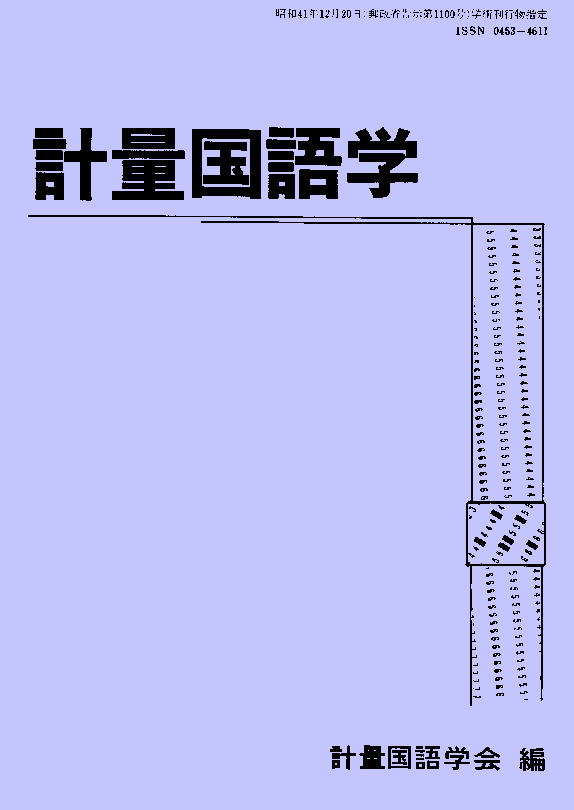Volume 30, Issue 5
Displaying 1-4 of 4 articles from this issue
- |<
- <
- 1
- >
- >|
Paper (A)
-
Article type: Paper (A)
2016 Volume 30 Issue 5 Pages 257-274
Published: June 20, 2016
Released on J-STAGE: May 01, 2024
Download PDF (1868K)
Resource
-
Article type: Resource
2016 Volume 30 Issue 5 Pages 275-285
Published: June 20, 2016
Released on J-STAGE: May 01, 2024
Download PDF (886K)
Book Review
-
Article type: Book Review
2016 Volume 30 Issue 5 Pages 286-291
Published: June 20, 2016
Released on J-STAGE: May 01, 2024
Download PDF (546K)
Tutorial
-
Article type: Tutorial
2016 Volume 30 Issue 5 Pages 292-303
Published: June 20, 2016
Released on J-STAGE: May 01, 2024
Download PDF (1155K)
- |<
- <
- 1
- >
- >|
